
Developments in the Built Environment
Scope & Guideline
Advancing sustainable solutions for tomorrow's built environments.
Introduction
Aims and Scopes
- Sustainable Construction Practices:
Research focusing on reducing environmental impacts, optimizing resource use, and promoting circular economy principles in construction. - Innovative Materials and Technologies:
Exploration of new materials, including recycled and bio-based materials, and cutting-edge technologies such as 3D printing and smart materials. - Building Performance and Health Monitoring:
Studies related to assessing and enhancing the performance, safety, and health of buildings through monitoring and innovative design. - Lifecycle Assessment and Cost Analysis:
Methodologies for evaluating the economic and environmental impacts of construction projects throughout their lifecycle. - Digitalization in Construction:
Integration of digital tools like Building Information Modeling (BIM) and digital twins to improve project management and construction processes. - Structural Integrity and Resilience:
Research on improving the structural performance and resilience of buildings against environmental challenges such as climate change and natural disasters.
Trending and Emerging
- Circular Economy and Waste Management:
Increasing emphasis on recycling construction materials and minimizing waste, including studies on the reuse of industrial by-products. - Smart and Digital Construction Technologies:
Growing interest in the application of digital technologies such as AI, machine learning, and the Internet of Things (IoT) to enhance construction efficiency and safety. - Sustainable and Resilient Materials:
Research into materials that not only reduce carbon footprints but also enhance the resilience of structures to climate change impacts. - Health and Well-being in the Built Environment:
A rising focus on how building design impacts occupant health, comfort, and productivity, integrating aspects of biophilic design and indoor environmental quality. - Advanced Modeling and Simulation Techniques:
Emerging methodologies in predictive modeling, simulation, and data analytics for optimizing building performance and construction processes.
Declining or Waning
- Traditional Construction Methods:
There is a noticeable reduction in research focused solely on conventional construction methodologies as the industry shifts towards more innovative and sustainable practices. - Non-digital Project Management Approaches:
As digital tools and methodologies gain traction, traditional project management approaches are becoming less prominent in discussions within the journal. - Basic Material Science Studies:
Research that does not incorporate advanced technologies or sustainability aspects is waning, indicating a shift towards more applied and innovative material studies. - Generalized Building Codes and Standards:
Discussions around traditional building codes are decreasing as the focus shifts towards adaptive, innovative, and performance-based design methodologies. - Basic Environmental Impact Studies:
Research focusing on basic environmental impacts without a connection to innovative solutions or sustainability metrics is becoming less relevant.
Similar Journals
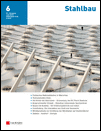
Stahlbau
Exploring Cutting-Edge Research in Building and Construction.Stahlbau is a prestigious journal published by ERNST & SOHN, focusing on the intersection of materials science, civil engineering, and mechanical engineering. With its roots dating back to 1968 and extensive coverage through 2024, this journal serves as a vital platform for the dissemination of innovative research and insights in the fields of Building and Construction, Civil and Structural Engineering, and Advances in Metals and Alloys. Despite its categorization in the Q3 quartile across several disciplines, it is recognized for its rigorous peer-reviewed articles and its commitment to advancing knowledge in structural engineering and materials' performance. The journal aims to foster a dynamic dialogue among researchers, industry professionals, and students, making it an essential resource for anyone looking to stay at the forefront of developments in construction and materials engineering. Access options reflect a commitment to intellectual exchange in academia, emphasizing the journal's role as a cornerstone for emerging research and best practices.
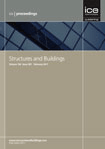
PROCEEDINGS OF THE INSTITUTION OF CIVIL ENGINEERS-STRUCTURES AND BUILDINGS
Transforming Ideas into Engineering ExcellencePROCEEDINGS OF THE INSTITUTION OF CIVIL ENGINEERS-STRUCTURES AND BUILDINGS, published by Emerald Group Publishing Ltd, is a leading journal in the fields of Building and Construction and Civil and Structural Engineering. Since its inception in 1992, this journal has served as a vital platform for disseminating high-quality research and innovative practices within the industry, contributing to the advancement of engineering knowledge and its applications. With an impact factor reflective of its significant presence in the field, this publication ranks in the Q3 category, reinforcing its role as an essential resource for researchers and professionals alike, positioning it among the top journals in its category. As of 2023, it holds notable Scopus rankings, emphasizing its credibility and influence within both Building and Construction (Rank #88/223) and Civil and Structural Engineering (Rank #171/379). Researchers aiming to enhance their understanding of cutting-edge developments in civil engineering will find this journal indispensable in accessing a wealth of knowledge, methodologies, and case studies that shape the infrastructures of tomorrow.

Proceedings of the Institution of Civil Engineers-Construction Materials
Transforming Civil Engineering Through Material ResearchProceedings of the Institution of Civil Engineers - Construction Materials is a leading journal dedicated to advancing the field of civil engineering, with a specific focus on construction materials. Published by Emerald Group Publishing Ltd in the United Kingdom, this journal serves as a critical platform for disseminating innovative research and practical applications in material science and structural engineering. With an ISSN of 1747-650X and E-ISSN 1747-6518, it spans an impressive timeline from 2006 to 2024, encapsulating pivotal studies that influence contemporary engineering practices. As a Q3 journal in the categories of Civil and Structural Engineering, Materials Science, and Mechanics of Materials, it reflects a solid academic standing, holding ranks of 152 out of 379 in Civil Engineering and 171 out of 398 in Mechanics of Materials, positioning itself within the esteemed scholarly community. The journal's objectives include promoting innovative material applications and fostering collaboration among professionals and researchers in the field. Although it does not currently offer open access, its comprehensive insights and findings are invaluable for researchers, professionals, and students striving for excellence in civil engineering and materials science.
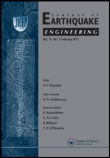
JOURNAL OF EARTHQUAKE ENGINEERING
Leading the way in earthquake resilience and safety.JOURNAL OF EARTHQUAKE ENGINEERING, published by TAYLOR & FRANCIS LTD, stands as a pivotal resource in the fields of Building and Construction, Civil and Structural Engineering, and Geotechnical Engineering. With an impressive Q1 ranking in multiple categories for 2023, this journal is instrumental for researchers, professionals, and students committed to advancing knowledge in earthquake engineering and its practical applications. As a platform that spans the years from 1997 to 2024, it highlights significant contributions to safety, risk, reliability, and quality in engineering practices. While the journal operates on a subscription basis, its highly regarded articles, bolstered by robust Scopus rankings—such as rank #46 in Building and Construction—underscore its credibility and influence in shaping standards and methodologies within the discipline. Promoting innovative and evidence-based approaches, the JOURNAL OF EARTHQUAKE ENGINEERING is essential reading for anyone engaged in the science and technology of earthquake-resistant structures.
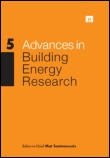
Advances in Building Energy Research
Elevating Energy Efficiency through Scholarly ExplorationAdvances in Building Energy Research is a pivotal journal dedicated to the scholarly exploration of energy efficiency and sustainable practices within the building and construction sector. Published by Taylor & Francis Ltd from the United Kingdom, this journal provides a rich platform for researchers, industry professionals, and students interested in the latest advancements and methodologies that drive energy conservation in architecture and engineering. With an impressive 2023 Scopus ranking of #64 out of 223 in the Building and Construction category and a notable Q2 category quartile, the journal occupies a significant position in its field, emphasizing high-quality, peer-reviewed research that meets the needs of a global audience. Though it operates under a subscription model, its contributions are invaluable for advancing knowledge that addresses the urgent challenges of energy consumption and sustainability in built environments. Spanning research published from 2007 to 2024, this journal continues to be an essential resource for those seeking innovative solutions and insights into building energy performance.
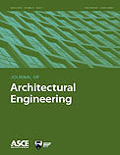
Journal of Architectural Engineering
Shaping Sustainable Environments Through Innovative EngineeringThe Journal of Architectural Engineering, published by the ASCE (American Society of Civil Engineers), stands as a pivotal resource in the interdisciplinary fields of architecture and engineering. With an ISSN of 1076-0431 and E-ISSN 1943-5568, this journal has garnered a notable reputation since its inception in 1995, currently converging towards 2024. Boasting a Q1 ranking in Architecture and Visual Arts and Performing Arts, alongside respectable Q3 rankings in Building and Construction and Civil and Structural Engineering, the journal places itself in the elite class of scholarly publications, evidenced by its impressive Scopus rankings. Its commitment to providing cutting-edge research ensures comprehensive coverage across various aspects of architectural engineering, facilitating robust interdisciplinary dialogues. Although the journal operates under a traditional access model, its impact on the academic community remains profound, making it an essential platform for researchers, professionals, and students who seek to push the boundaries of knowledge in their respective fields. This journal not only aims to stimulate innovative ideas but also fosters a collaborative environment for advancing sustainable architectural practices in a rapidly evolving built environment.

International Journal of Sustainable Construction Engineering and Technology
Transforming construction through sustainable methodologies.International Journal of Sustainable Construction Engineering and Technology is a pivotal publication in the evolving fields of building and construction, civil and structural engineering, and environmental engineering. Published by University Tun Hussein Onn Malaysia, this journal serves as a platform for the dissemination of innovative research and developments dedicated to sustainable practices in construction and engineering. With an ISSN of 2180-3242, this journal has been contributing to the academic community since its inception, with coverage from 2018 through 2024. While currently categorized in quartiles Q4 for both building and construction and civil engineering, and holding similar ranks in environmental engineering, the journal continues to strive for academic excellence and broader outreach. The journal, although currently not an open access platform, remains an important resource for professionals, researchers, and students aiming to explore sustainable methodologies and technologies in construction. We invite you to engage with cutting-edge studies that address environmental impacts in engineering and contribute to a sustainable future in infrastructure development.

ARCHITECTURAL DESIGN
Shaping Tomorrow's Built EnvironmentARCHITECTURAL DESIGN, a leading journal published by Wiley Periodicals, Inc., serves as a vital platform for discourse in the fields of architecture and visual arts. With an ISSN of 0003-8504 and an E-ISSN of 1554-2769, this esteemed publication offers comprehensive insights into contemporary design practices and emerging architectural theories. Established in the United States and continuously evolving from 2002 to 2024, the journal has secured a prominent position with a Q3 status in Architecture and an impressive Q1 ranking in Visual Arts and Performing Arts as of 2023. Its Scopus rankings further affirm its relevance, with a percentile ranking of 82nd in the Visual Arts category. Although it does not currently offer Open Access options, the journal remains dedicated to disseminating high-caliber research and innovative design strategies that engage a diverse readership of researchers, professionals, and students alike. The contributions published within its pages are instrumental in shaping the discourse around architecture, making ARCHITECTURAL DESIGN an indispensable resource for anyone passionate about the built environment.
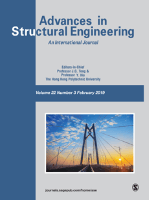
ADVANCES IN STRUCTURAL ENGINEERING
Pioneering Innovations in Structural EngineeringADVANCES IN STRUCTURAL ENGINEERING, published by SAGE PUBLICATIONS INC, is a leading journal dedicated to the advancement of knowledge in the fields of Building and Construction, as well as Civil and Structural Engineering. With a solid impact factor and a commendable Scopus ranking (Rank #60 in Building and Construction, Rank #105 in Civil and Structural Engineering), this journal stands at the forefront of academic research, providing a platform for high-quality articles that contribute significantly to the discipline. Covering a range of topics from innovative construction techniques to sustainable engineering practices, the journal aims to foster collaborative dialogue among researchers, industry professionals, and students alike. As of 2023, it boasts impressive category quartiles, ranking Q1 in Building and Construction and Q2 in Civil and Structural Engineering. ADVANCES IN STRUCTURAL ENGINEERING is a vital resource for those looking to stay abreast of emerging trends and groundbreaking developments in structural engineering, promoting an environment of continuous learning and application of best practices. With a convergence of research from 1999 to 2024, the journal not only emphasizes theoretical frameworks but also bridges the gap between academia and practical application in engineering projects.

Gradevinar
Empowering Engineers Through Open Access ResearchGradevinar, published by the Croatian Society of Civil Engineers-HSGI, is a leading Open Access journal in the field of Civil and Structural Engineering, with a significant history that dates back to its inception in 1980. This journal, with the ISSN 0350-2465 and E-ISSN 1333-9095, has established itself as a vital platform for disseminating innovative research and practical developments in civil engineering, particularly since it became Open Access in 2000, facilitating unrestricted access to its wealth of knowledge. As of 2023, Gradevinar is ranked in the third quartile (Q3) of Scopus’s Civil and Structural Engineering category, demonstrating its growing influence and relevance in the academic community, with a current ranking of #255 out of 379 journals in the field. Researchers, professionals, and students benefit from this journal's commitment to high-quality content that reflects the latest advancements and best practices in civil engineering, contributing to both technical proficiency and sustainable development in infrastructure projects across Croatia and beyond.